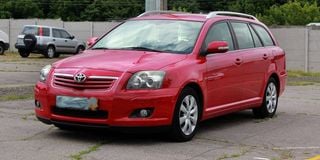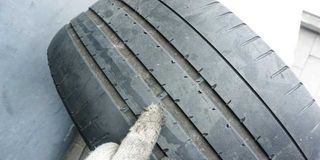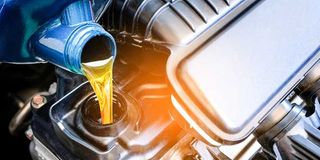Premium
Expect problems when you fit your car with a used engine

The Toyota Avensis.
Greetings.
I am an ardent fan of this column, which is very informative. I bought a 2007 Toyota Avensis ex-UK from a returning resident and the car performed well for six years. Then power decreased despite servicing on time with genuine parts. My mechanic replaced the original engine with a used one but it lasted for only two months before losing power and emitting a lot of smoke. Even after an overhaul, the engine power did not improve and the smoke became unbearable. Should I try a different mechanic? Should I change the engine for the third time or keep the car as a write-off? Currently, the car is idle, but all other functions are fine.
Daniel MM
Buying a used engine is usually a very high-risk strategy. If it is in good condition, then why is it not still in its original car? If the car it came from was wrecked in an accident, was the salvaged engine truly unscathed?
Used engines should be considered only if they have been so thoroughly overhauled that the vendor is prepared to give a warranty. And then, why not have your own engine thoroughly overhauled in the first place? Then you truly know what condition it is in.
Also, because your original engine was from the UK, it might have had more sophisticated anti-pollution gadgets fitted to comply with UK regulations that are not compatible with our fuels. In this case loss of power, black smoke and erratic idling might be caused by a blockage in the diesel particulate filter, or a blocked exhaust gas recirculation (EGR) valve.
The remedy for that would be: to remove, clean, and refit. Where did your original engine go? It is not for me to suggest whether or not you should replace your mechanic. Let us just say that a second opinion might be a good idea.
Size is not all that matters when it comes to engine fuel economy
I currently own a pre-used Nissan AD 1.3. Previously, I owned a Pajero 2.5, X-Trail 2.0, Mitsubishi iO 1.8 and a Nissan B16 1.5. I am a conservative driver (unless it’s an emergency, I do not do more than 100kph). I have noted that the Nissan AD is not as fuel-efficient as the B16 which did 16km per litre. I have to drive the AD 1.3 especially gently to match the X-Trail and Mitsubishi iO, where both did 11km per litre. What could be the issue? I thought less cc means less fuel consumption.
Naftali.
Driven gently, your AD should do better than 11kpl. Between 13 and 16 kpl is the normal bracket for this model when driving gently with moderate loads.
There are many technical reasons (in addition to driving style), why consumption might be slightly higher, ranging from a small leak somewhere in the fuel supply system that evaporates before you can see it to the condition or settings of fuel jets, filters, ignition timing, binding brakes etc, etc and etc. Competent service should be able to identify and address those possibilities.

I currently own a pre-used Nissan AD 1.3. Previously, I owned a Pajero 2.5, X-Trail 2.0, Mitsubishi iO 1.8 and a Nissan B16 1.5. I am a conservative driver (unless it’s an emergency, I do not do more than 100kph). I have noted that the Nissan AD is not as fuel-efficient as the B16 which did 16km per litre.
The cubic capacity of an engine is certainly a factor in its potential fuel consumption, but there are many (!) other elements involved. Engine designs have all sorts of differences other than just size, depending on the performance characteristics they want to achieve and the production cost limits they are working with.
As a perspective, engines of exactly the same size, or any other size, using the same fuel, can have differences in the number of cylinders, the number of valves, the compression ratio, the pitch of the camshaft(s), the shape of the combustion chamber, the proportions and shape of the pistons, length of up-and down-movement (stroke), the size and weight balance of the flywheel, the induction and ignition systems, the exhaust flow…and, of course, the age, condition, settings and functional efficiency of each working part.
There are differences, too, in the gear and final drive ratios, transmission systems, wheel sizes, inherent rolling resistance, the aerodynamics of the bodywork, the weight of the vehicle, the load it is carrying, the road surface it is using, the altitude and terrain it is operating in, the weather conditions, the ambient speeds of its general use. More recently, there are many additional devices that purify, reduce and/or convert exhaust emissions.
Every one of the factors listed here to some extent determines fuel consumption – and driving style can be the biggest influence of all.
So while engine size is an indicator of “potential” fuel economy, all these other factors mean the correlation between cc and kpl will never be a straight line, and your maxim of “less cc means less fuel consumption” is far from certain.
Indeed, the other factors can completely invert that equation. If you staged an “economy run” competition between the five models you have owned, assuming all were in equal condition, any of them could win it…depending on the road, the terrain, their load, and the average speed they were required to achieve, and how they were driven. At some extremes, the smaller engine might not be able to reach the finishing line.
In further understanding fuel economy, it is important to recognise that a vehicle that averages, say, 13kpl over a tankful or a week of motoring, will very rarely run at exactly 13kpl. The actual fuel consumption rate, minute to minute, will vary from less than 5kpl when accelerating uphill in first gear after a speed bump to perhaps 30kpl when coasting at moderate speed downhill.
This has all the signs of being a serious problem, have it checked immediately
Thanks for the knowledge you share with us. I bought a Nissan Sylphy and drove it from Mombasa to Nairobi. On arrival, I noticed the rear tyres had worn out the inside of their tread. When I took it for alignment, the left rear wheel leant inwards at the top. I changed the hub as advised, but the problem is still there. The shocks and bushes are okay. I am now being told to change the rear axle. Kindly advice.
Frank K
What you describe is clearly not a minor fault, and should be promptly addressed. My first guess (without seeing the car) is that the main rear suspension beam is bent or its mounting points are compromised…more than just a little.
The Sylphy has a torsion-beam rear suspension, which is neither a rigid axle nor fully independent.
This design is sometimes used by some manufacturers because it is light, low cost, simple and has good road handling, albeit to the detriment of rear-seat comfort. However, its alignment geometry is factory set and there is little scope for adjustment of alignment, camber or castor angles. The rear wheels are semi-independent, but what one does still affects the other.
A characteristic of torsion beam axles is that the camber of the wheels does not change if there is equal loading on both sides because the design acts like an anti-roll bar, so your descriptions of inside tread wear (a toe out problem or lurid camber error) and one wheel leaning in at the top are not quick-fix signs. The rate at which the treads wore out (one journey!) suggest the fault is severe.

The rate at which the treads wore out (one journey!) suggests the fault is severe.
You need to take the car to a highly proficient technician, and you may need either some sophisticated engineering or…a replacement. The whole floorplan may be bent.
But don’t despair immediately. As I say, that is just the first guess of a generalist without a personal look. A specialist who physically examines the car might make a different diagnosis, and perhaps put things right more simply. Bottom line: this is probably a job for a qualified mechanical engineer, not me nor a corner garage, even if it has some shade from the “hot sun”.
The wrong oil will help in an emergency, but not for long
Hi Mr Gavin,
I have a Honda Fit 2011 model with a mileage of 88,000km. I changed my gear oil a month ago and I later realised that I bought a manual transmission gear oil yet my car has an automatic transmission. So far I have not had any problem with horsepower or other mechanical issues. So, my question is whether it is wrong to put manual transmission gear oil in an automatic transmission (CVT) car. If it is wrong, what are the repercussions?
Srikanth
Short answer: You should always use the oil designed for the specific component you are lubricating – engine, power-steering, manual gearbox, normal automatic, constant velocity transmission with torque converter, or differential. In an emergency, the wrong oil will still work and be better than nothing to help you get home. But continued use of the wrong oil over time could cause damage (sometimes delayed, but ultimately severe). You should refill your gearbox with the correct oil for CVT as soon as you can.

You should always use the oil designed for the specific component you are lubricating – engine, power-steering, manual gearbox, normal automatic, constant velocity transmission with torque converter, or differential.
Longer answer: While all of these oils have similar (but not identical) lubricating properties and an ability to perform hydraulic functions where necessary, they have different thicknesses and temperature tolerances and the ability to cope with extreme pressure loads, and they have different additives to optimise their performance in one or more of those respects.
So while all will perform the basic functions in all the oil places, they will be sub-optimal and even sub-standard if put to use in operations that they were not specifically designed for.
The pumps and valves which allow the oil to circulate are designed for a particular viscosity. An oil that is too thin will not give adequate protection where pressures are extreme or at temperatures that are too high; an oil that is too thick will not get to all the necessary places and could impose extra resistance (loss of power, worse fuel economy, strain on torque impellers) on parts moving at higher speed, and so on.
While all these oils operate in environments made of metal (and have additives to match), some components involve other materials with different likes and dislikes. Clutch materials, seals, and the bands on a torque converter, for example.
Some of the oil/component recipes are interchangeable. Automatic Transmission Fluid (ATF) will work equally well in conventional automatics and in power steerings. Some manual gearboxes are designed to use it, too, and those are unlikely to freak if manual gear oil is used instead. Bottom line: in no respect will the wrong oil work better than the specialised oil a component is designed to use.
***
Do you have a motoring question? Email [email protected]





